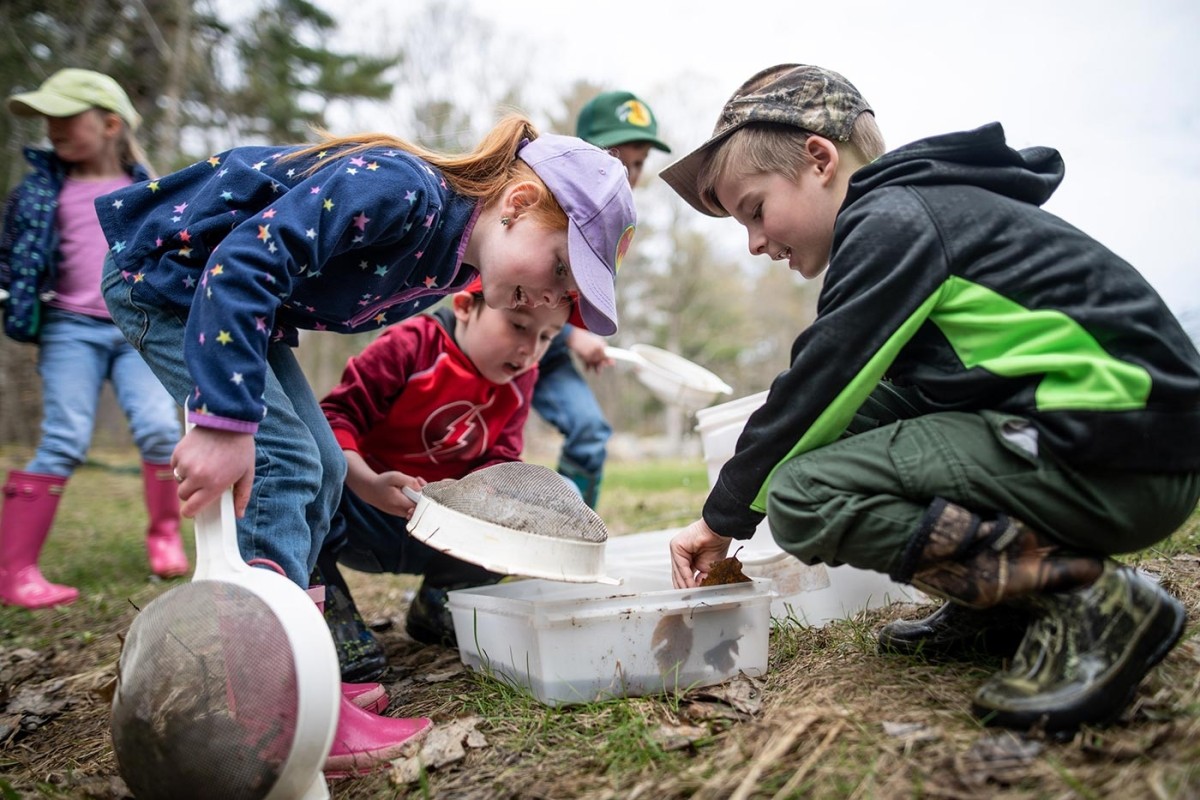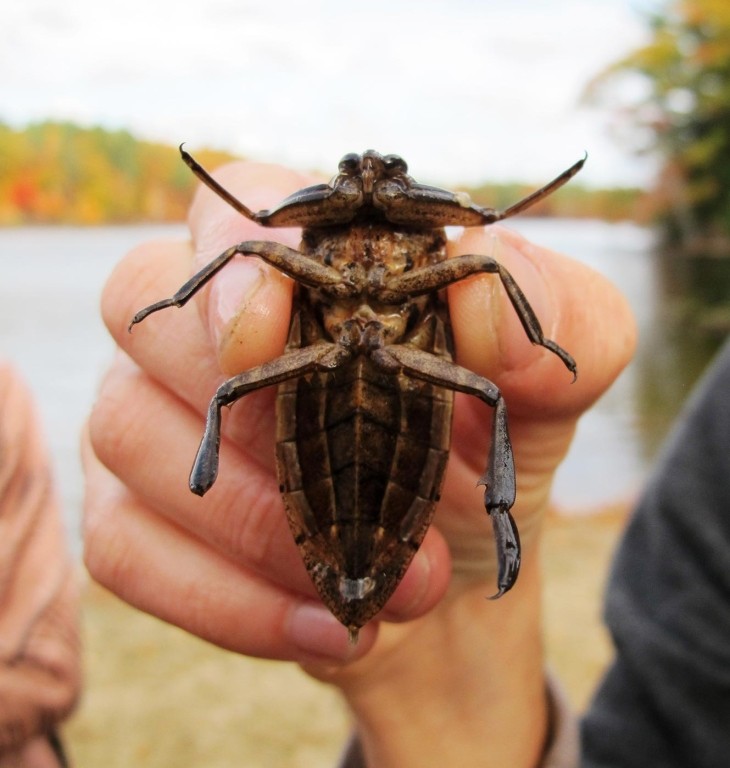
I love a good treasure hunt. I’m not talking about a quest to find buried gold, but the dip and pull of my ponding net. I delight in each search and sort, finding gems such as green damselfly nymphs, ruby red midge larvae, mica-speckled caddisfly cases, and swirling diving beetles. Wetlands are teeming with diverse life-forms, and each catch reveals some new discovery.
You don’t need special gear to become a pond treasure hunter. You don’t even need to get wet if you don’t want to. Just grab some sneakers or muck boots, a spoon, a bucket, small open-top containers (for example, empty yogurt cups), and a flat vessel that can serve as a tray (I use an old roasting pan). A hand lens or other means of magnification, such as a smartphone, is helpful. And you’ll need something to scoop and sift mud; an old kitchen strainer with a fine metal mesh works very well, although for a longer reach, you may want to purchase a long-handled ponding net, available through most scientific supply companies.
To get started, use the bucket to fill the plastic containers and tray with water from the wetland. Then take your first scoop with the strainer. I often start with mud from the wetland shallows, just where the water and the land meet, but you can also go deeper, down into the mucky bottom. Look for places with submerged branches, logs, and roots or stems. The debris shelters many small creatures, including dragonfly, mayfly, and stonefly nymphs.
Give the net or strainer a wiggle or two in the water before pulling it in, to remove excess mud. The creatures won’t fall out because they are held in by the mesh of the net or strainer. Then quickly set it in the tray. (If you have caught a large creature, such as a frog or fish, transfer it to the bucket, and make sure there is some water in the bucket.) Remember, any creatures in your catch are aquatic and need water to breathe, so the faster you can submerge them into the tray of water, the better. Once you have your sample in the tray, use the spoon to gently push it apart and see what’s there. Because most of your catch will be small, this is when a magnification tool is helpful, to examine the details – or to spot the smallest creatures. Some animals, such as the cyclops, a type of freshwater copepod, are as small or even smaller than a poppy seed. Gently catch the creature in the spoon and transfer it to a smaller water-filled container for closer observation and identification.
Identifying the catch is my favorite part of treasure hunting. Examining tiny wetlands creatures under magnification reveals many surprises. From the delicate sliver of the water penny to the sticklike water scorpion, life in our wetlands comes in many different shapes, sizes, and colors. Exploring this diversity is endlessly fascinating to me. After I sketch and photograph my aquatic treasures, I set them free.
Pond treasure hunting can also serve conservation purposes. For the past 30 years, I have spent many a happy day waist-deep in the rivers and streams of the Monadnock Region of New Hampshire, searching for aquatic invertebrates with middle and high school students.
Invertebrates serve as our primary tool for determining water quality. Certain arthropods, including stonefly nymphs, are highly sensitive to low oxygen levels and degraded water quality, and their absence is a strong indicator that the water is compromised. Across the Northeast, there are opportunities to participate in such volunteer river and stream assessments. For more information on using aquatic invertebrates as water quality indicators, check out the University of New Hampshire Center for Freshwater Biology’s “Image-Based Key to Stream Invertebrates,” available here.
Summer is a great time to explore aquatic life. So don’t forget your strainer the next time you head out to the wetlands.
Recommended References:
A Guide to Common Freshwater Invertebrates of North America by J. Reese Voshell, Jr. (The McDonald & Woodward Publishing Company, 2002)
Pond Life: Revised and Updated (A Golden Guide from St. Martin’s Press) by George K. Reid (St. Martin’s Press, 2001)
Pond Watchers Guide to Ponds and Vernal Pools of Eastern North America. Published by the Massachusetts Audubon Society and available via their online shop.


